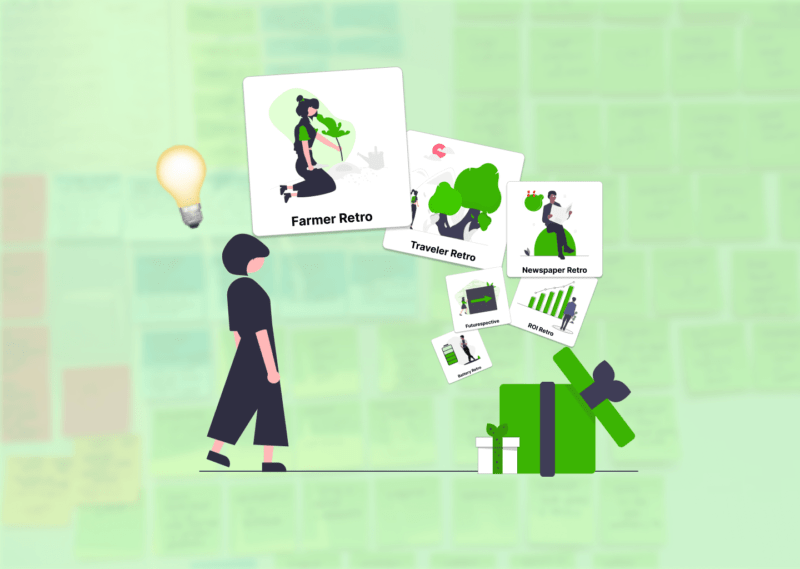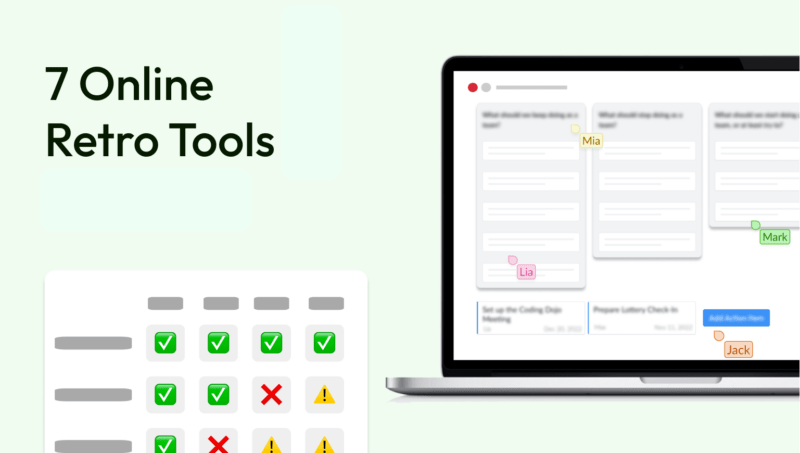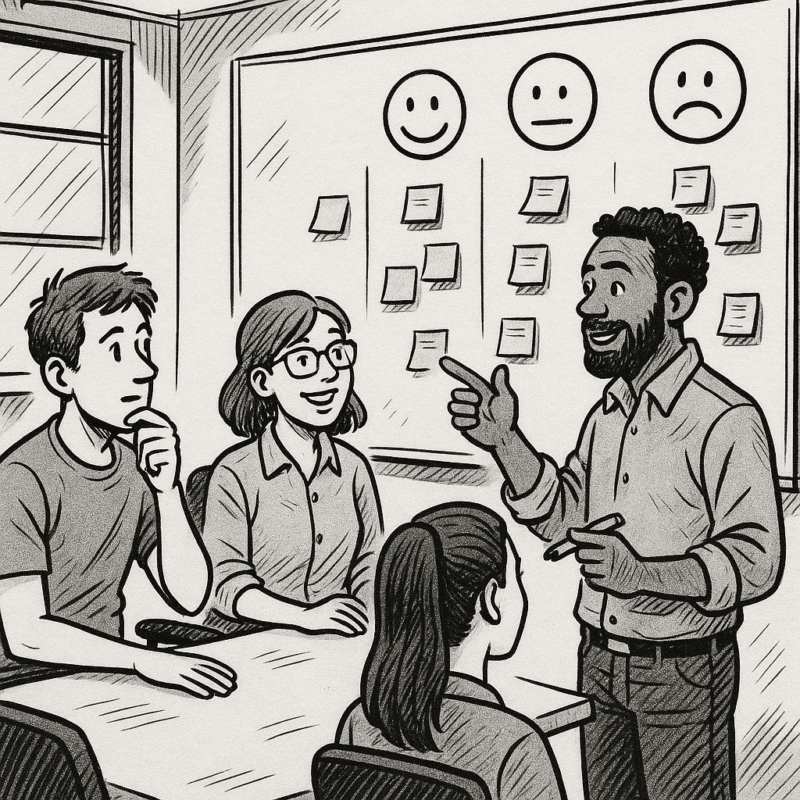A project retrospective is a meeting where teams reanalyze a completed project to better understand and learn from both the successes and failures.
Among other things, they will help you uncover and address the root causes of problems or difficulties encountered during the project.
Project Retrospective Templates for Word
Project Retrospective Tips and Templates
A typical project retrospective follows these steps:
- Set the frame: Establish the rules of the game, expectations, and goals of the retro. Create a safe and positive environment for open and honest feedback.
- Collect data: Collect and share information about what happened during the project, such as metrics, events, successes, challenges, feedback, etc.
- Generate insights: Analyze the data and identify the patterns, trends, causes and effects. Highlight what has worked well and what can be improved.
- Deciding what to do: Brainstorm and prioritize possible solutions or actions to improve the weaknesses. Assign a responsible person and deadline for each action item.
- Leveraging the value of retro: Summarize key findings and action items. Celebrate the successes and recognize the contributions of each team member.
If you want to go into more detail about the process of a retrospective, you can do that here: Easy to use sprint retrospective template
Project Retrospective Templates for Word
At the core of a retro is what is known as the retro format, which makes the retro adaptable to any context, the goals and preferences of the team. Some common formats are:
1. Start Stop Keep Retrospective👍 👎
When talking about retrospective templates, there is no getting around this format. It asks the three most basic questions that make a reflection successful:
Open Feedback Questions
Keep: What should we keep?
Stop: What should we stop doing?
Start: What should we start doing?
Project Retrospective Templates for Word
2. DAKI / Drop Add Keep Improve Retrospective:
In the second retrospective template, we now have 4 questions instead of 3. Retrospectives with more than 3 questions, are usually a bit more extensive, but can provide interesting insights due to the additional perspective on the last sprint.
So ideal for smaller teams (Here you can find a detailed article about the DAKI retrospective):
Open Feedback Questions
Drop: What should we drop?
Add: What should we add?
Keep: What should we keep?
Improve: What should we improve?
Project Retrospective Templates for Word
3. Three Little Pigs Retrospective: 🐷
Retrospectives are not only held with questions like "What went well?" but also with more creative approaches, as in this case. This ensures that team members can come out of their shells more:
Open Feedback Questions
House of straw: What do we do that is just holding together, but could topple over at any moment? 🌱
House of sticks: What do we do that is relatively stable, but could be improved? 🪵
House of bricks: What do we do that is rock solid? 🪨
Project Retrospective Templates for Word
4. The Campfire Retrospective:🔥
And last but not least, you can of course create a very specific mood with a retro. Or who does not like to sit around the campfire? – Attention please make sure you do not put a real fire at your office 😉:
Open Feedback Questions
Warm fire: What made you feel good in the last sprint?
Turned to ashes: What did not work as desired and crumbled to ashes?
The shooting star: What do you wish for the future?
Of course, we have many more templates up our sleeve. Try them out by testing our tool or have a look at this article: 22 Refreshing Agile Retrospective Templates
Project Retrospective Templates for Word
How to use these templates in Word?
One of the tools you can use to create and perform project retrospectives is Word. You can use the Retrospective templates by following these steps (takes about 5-15 minutes):
- Open a new blank document in Word.
- Insert a table with as many rows and columns as you need for your chosen format. For example, if you want to use the Start-Stop-Keep format, you can insert a table with three columns and as many rows as you need for your action points.
- Label each column with your chosen retro question. For example: Start? Stop? Continue?
- Fill in each cell with your data, findings, or action items. You can use bullets, numbering, or checkboxes to organize your information.
- Format your table according to your wishes. You can change the font size, color, alignment, border style, etc.
- Save your document as a template (.dotx). This way you can reuse or customize it over and over again. You can also share it with your team members via email or cloud storage.
Project Retrospective Templates for Word
Word as a tool for agile retrospectives?
At this point I want to say clearly: As nice as Word is as a tool, it brings some disadvantages especially for retrospectives. Therefore, here is a short overview of some advantages and disadvantages of Word as a retro tool:
Pros: | Cons: |
|---|---|
Easy to use: You don't need any special skills or training to use Word for agile retrospectives. | Static: Word is a static tool that does not support real-time collaboration or interaction. |
Flexible: Word allows you to customize your documents according to your needs and preferences. | Limited: Word is a limited tool that does not provide specific functionality for agile retros. |
Compatibility: Word is compatible with most devices and platforms. | Boring: You can't use gamification or feedback mechanisms to make your retrospectives more fun and interactive. |
Project Retrospective Templates for Word
Better alternatives to Word for agile retrospectives
Since retrospectives are now used by hundreds of thousands of teams around the world, there are now good tools to do just that. One of these tools is our own "Echometer".
In it you can test more than 50+ templates for free and without registration:
If you are interested in more tools, you can also check out our tool comparison: The best retro tools for agile teams
Conclusion
A project retrospective is a valuable practice that helps you learn from your project experience and improve your team performance. You can use various tools to create and conduct your own retros, such as Word or Echometer.









